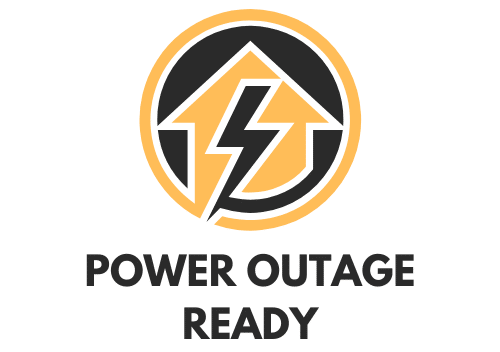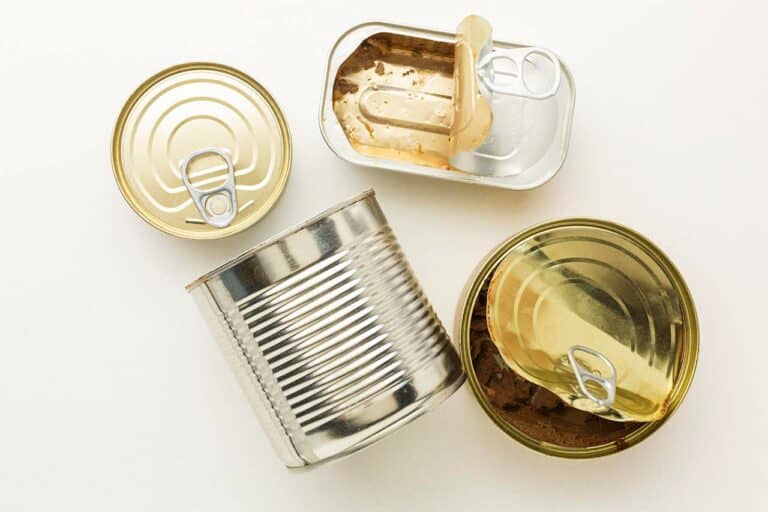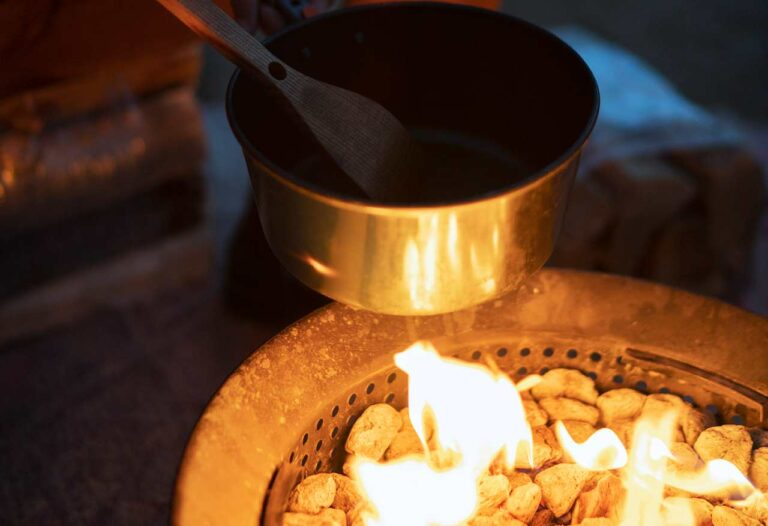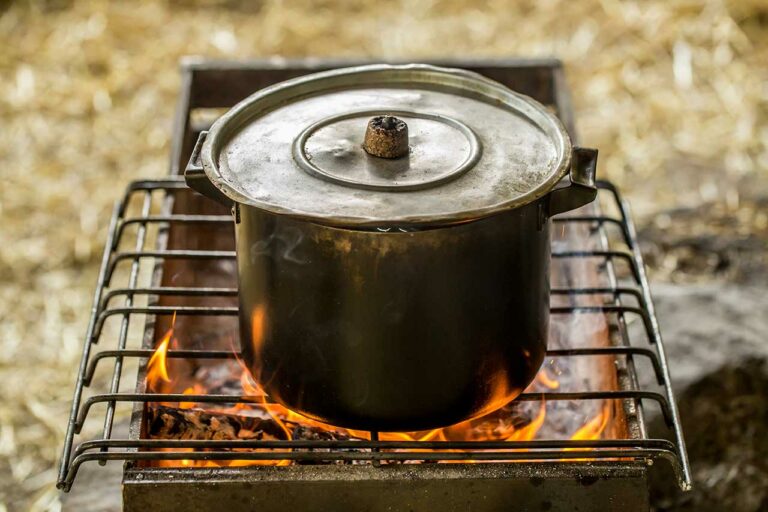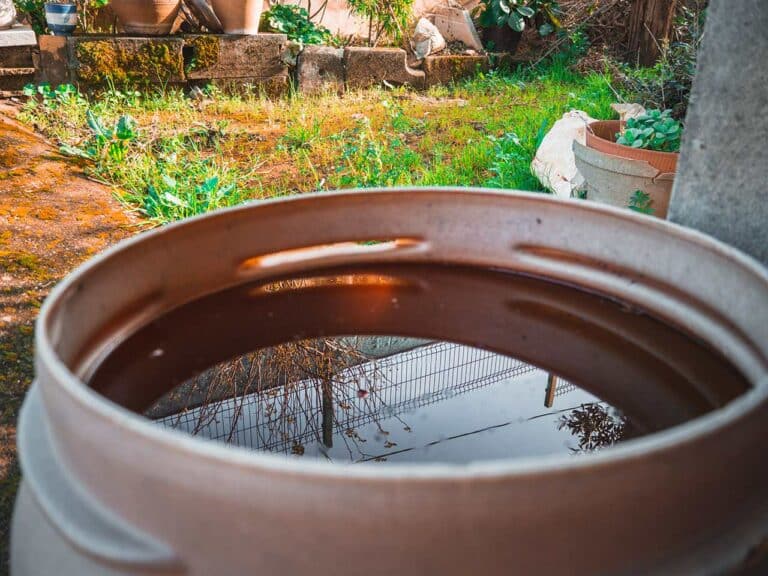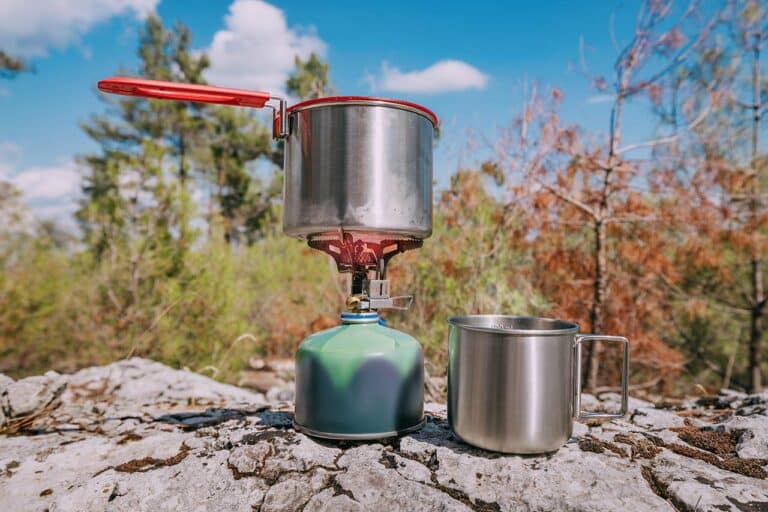How To Heat Water Without Electricity (Easy Guide)
Imagine you’re in a power outage where you lack electricity but you need hot water. Don’t worry; there are plenty of ways to heat water without relying on electricity.
You may already have some of the necessary tools at your disposal, while others could be new to you. But there are plenty of them. It’s time to get resourceful and tap into your inner survival expert as we dive into these safe, practical alternative methods for heating water without electricity.
Using Fire to Heat Water
Using a Fireplace
When it comes to heating water when the power is out, the first thing to do is look around you. If you see a fireplace, you’re in luck. First, make sure your fireplace is clean and free of any flammable materials. Next, grab yourself some firewood, kindling, and a firestarter. Build and light your fire just like you usually would. Place a pot or kettle filled with water on a grate or rack above the fire, and let the heat do its thing. Keep an eye on it, and soon enough, you’ll have water that’s nice and hot.
The bonus of using a fireplace to heat water is that it also provides heat, which is great during cold-weather outages, but, if you need to heat water in a summertime power outage, this probably won’t be your first choice.
Using a Wood-Burning Stove
Like a fireplace, a wood-burning stove is a great heater plus water warmer. First, make sure the stove is in good condition and properly vented. Then, prepare your firewood and kindling. After that, open the stove’s door and add your kindling and firewood. Light it up safely and close the door. Place your pot or kettle filled with water on top of the stove, and let the heat work its magic. Before you know it, you’ll have steamy water without using a single watt of electricity.
Again, not ideal when it’s hot.
Using a Campfire or Fire Pit
If you don’t have an indoor fireplace or wood-burning stove, but you’ve got an outdoor fire spot, the same principles apply. Light your fire pit or find a good spot to build your fire. Gather firewood, tinder, and kindling, and use a firestarter to get it going. Once you’ve got a nice, cozy fire roaring, place a pot or kettle filled with water on a grate or stand above the fire. Watch it carefully, as open fires can be unpredictable, but it’ll do the trick.
Using Sunlight to Heat Water
No fires available, or need to heat water in the middle of summer when a fire would make things miserable? Well, if you’ve got access to the sun, you’ll be A-okay. Sunlight can be a great source for heating water without electricity. Harnessing the power of solar energy, you can use several methods like solar cookers, solar shower bags, or solar ovens to get the job done. These devices are eco-friendly and efficient, making the most of the sun’s energy.
Using a Solar Cooker
A solar cooker uses solar energy to heat water or cook food. It’s simple and easy to use. Just place the water container or pot in the solar cooker, which captures and concentrates sunlight to heat the contents inside. Here are some popular types of solar cookers:
- Panel cookers: Foldable and portable, they use reflective panels to concentrate sunlight onto the pot.
- Box cookers: As the name suggests, it’s a box with insulation on the inside and a glass or acrylic lid. A reflector on the top directs sunlight into the box, heating the contents.
- Parabolic cookers: Highly efficient, they use a parabolic shaped reflector that focuses sunlight directly onto the pot.
Depending on the type and efficiency of the solar cooker, it might take a few hours to heat water to a desired temperature. This method works best on clear sunny days, so it may not be the most reliable option during cloudy weather.
Using a Solar Shower Bag
A solar shower bag is ideal for heating water when for those non-cooking activities. Fill the bag with water, seal it, and leave it in direct sunlight. The bag’s surface is designed to absorb heat from the sun’s rays, warming up the water inside. Once it reaches your preferred temperature, hang the bag and use the nozzle to shower or wash dishes.
These bags are typically lightweight, compact, and affordable. But you will need several hours of sunlight to heat them up fully.
Using a Solar Oven
Last in the solar category, we’ve got the solar oven, another device that effectively harnesses solar energy. Apart from cooking food, you can also use it to heat water. All you need is a pot or container with water and your solar oven. Place the pot inside the oven, align the reflectors to capture sunlight, and you’ll have heated water in no time.
Solar ovens usually have an insulated box design, ensuring that the heat is retained inside for optimal efficiency. They’re portable and don’t need fuel, making them a fantastic option when you’re off the grid. Remember that the efficiency of a solar oven depends on weather conditions and the time it’s exposed to sunlight.
Using Propane to Heat Water
Like with solar, there are a couple of propane-powered options for heating water, one designed specifically for the task.
Using a Propane Water Heater
Propane water heaters use propane to heat water on demand, and they come in various sizes to suit your needs. To set up a propane water heater, you’ll need to connect it to a propane tank and a water source. Make sure to follow the manufacturer’s instructions, and always maintain proper ventilation when using this type of equipment. They are best used outdoors.
Using a Propane Stove or Grill
If you have a propane stove or grill, you don’t need a separate water heater. Just make sure you have a propane tank handy and that it’s filled with enough fuel. To heat water, simply fill a pot or kettle with the desired amount of water and place it on the stove or grill. Adjust the heat as needed, and you’ll have hot water in no time.
Other Alternative Methods
Using Candles
It’ll take a minute, but it is possible to heat water with candles alone. Tea lights work best because of their even heights. Just set up a few candles under a heatproof rack and set a heat-resistant container filled with water on top. Make sure to keep an eye on this setup and don’t leave it unattended. Gradually, the heat from the candles will warm the water. It’s slow, but it’s an easy and affordable option that requires minimal resources.
Using a Charcoal Burner
Charcoal may not be your go-to anymore when it comes to alternate heating methods, but it’s not a bad thing to have as part of your emergency supply. To use a charcoal burner to heat water, fill the burner with charcoal and kindling, then light it up. Once the charcoal is burning steadily, place a pot of water on top of the burner. Be cautious with this method, as the flames can get pretty intense. Make sure to use heat-resistant gloves when handling the pot and always follow safety guidelines when working with open flames.
Water Ingenuity in Times of Need
As you can see, there are numerous ways to heat water without relying on electricity. (Many of the same ones you can use for cooking.) From traditional fire-based methods to innovative solar techniques and even simple household items like candles, our resourcefulness can shine through when the need arises.
With these practical methods at our disposal, we are better equipped to face unpredictable situations and ensure our comfort and safety during a power outage.
